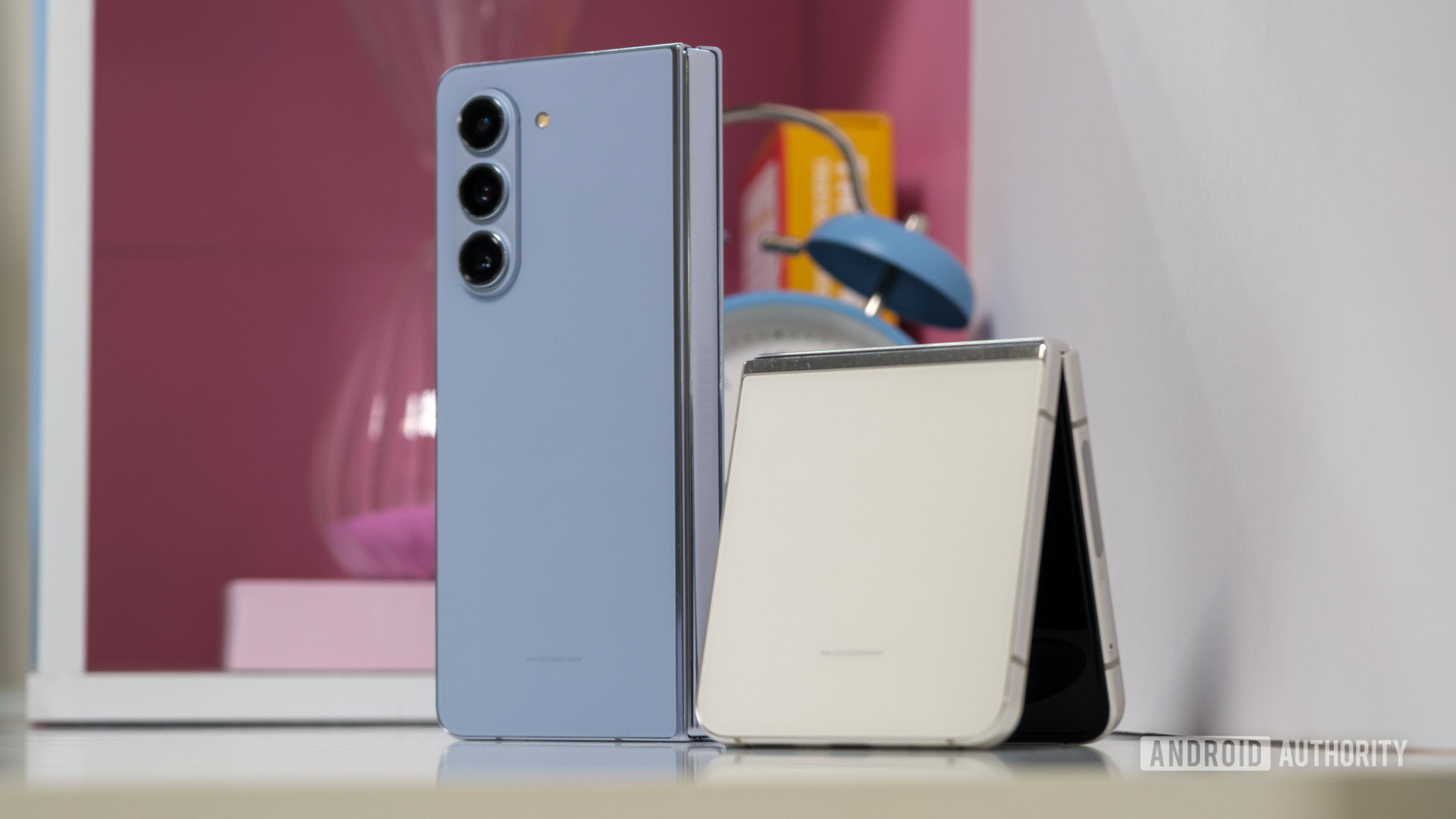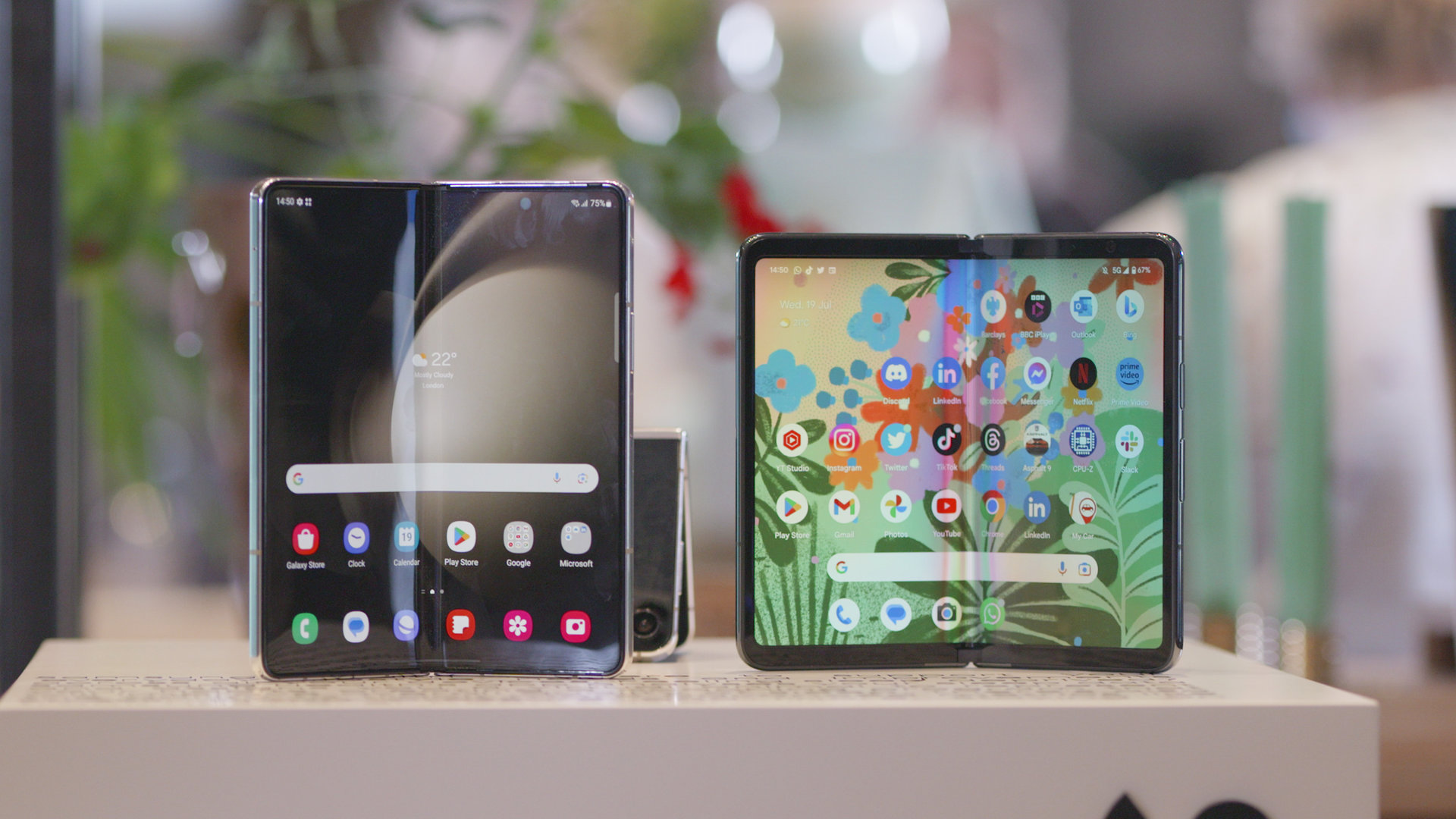
Ryan Haines / Android Authority
“Success breeds complacency” — an old adage that’s very apt when discussing Samsung’s latest foldable line-up. If you’d been hoping for Samsung to rip up the playbook in favor of more daring fifth-generation foldables, disappointment was inevitable. The Galaxy Z Fold 5 and Galaxy Z Flip 5 may remain the pinnacle of the form factor, but it’s hard not to have come away from the recent announcements a little deflated, perhaps even bored by the industry’s supposedly most innovative area of development.
Aside from the bigger cover screen on the Flip, flatter hinge, and marginally upgraded internals, you’d struggle to tell these products apart from their predecessors. It’s all very incremental and has been for years. You could go back two, perhaps even three generations, and still struggle to pick out a compelling reason to upgrade to the new model. The sluggish pace of innovation is all very iPhone-esque — a pretty sorry state of affairs for the industry’s fledgling form factor.
iPhone and Galaxy Z development move at glacial speeds.
Looking back, Samsung has taken its fair share of risks over the years, most of which have worked out well. The Note series and accompanying S Pen found a home among power users, while 2014’s Note Edge display helped kickstart the longrunning trend in curved panels (for better or worse). The Galaxy S series has undergone several well-received redesigns, from the breakout S2 and S3 to more refined S6, S8, and modern models. Even the original Z Fold was a moonshot, but these major shakeups have always been few and far between.
So I wouldn’t quite say Samsung is resting on its laurels exactly; there’s an element of sensible risk aversion when you have a product that works and industry-topping brand recognition. Don’t fix what isn’t broken, and all that. Unlike Apple though, there’s not exactly a viable range of alternatives to keep Samsung’s engineers feeling the heat either. Google’s Pixel Fold is a contender, but it’s just as expensive and only available in a handful of regions. Similarly, alternatives from HONOR and OPPO aren’t easy to lay hands on outside of China and some European markets.

Damien Wilde / Android Authority
There’s a little more competition for Samsung’s Flip, but it’s still far from the wide open landscape of the classic smartphone market. The Motorola Razr Plus and OPPO Find N2 Flip are fine choices in their respective markets, but both come with update and hardware trade-offs that won’t keep the Flip up at night. Samsung is, still, too often the best or only choice. Without rapacious competition, there’s little to no incentive for the top dog to become more aggressive on hardware or price. Even if the brand could put out the equivalent of an affordable Galaxy Z Fold FE to drive mass foldable adoption, why would it stop prioritizing higher profit margins with the current high-end portfolio?
While traditional smartphone entry barriers have fallen, the problem is that there’s still a high hardware and development cost associated with the foldable market. Those displays and hinges don’t come cheap and are likely the major reasons we’re yet to see anyone pressure Samsung on price. Not to mention the messy large- and small-screen apps we continue to see from Google and Samsung, despite claims of software maturity. Making foldables work seamlessly isn’t easy, so we shouldn’t expect to see prices tumble any time soon.
Samsung’s foldables are still too often the only choice in many markets.
With that in mind, it’s clear that Samsung still very much leads the market. Just like Apple, Samsung knows that polish and (near) faultless execution earn you the right to charge a premium and its foldables certainly show off the form factor in the best light. With comprehensive hardware that spans cameras, water resistance, wireless charging, and more, along with an update commitment that remains unbeaten in the space, the Galaxy Z Fold 5 and Galaxy Z Flip 5 are undoubtedly two of the best foldable phones money can buy. It’s just a shame that things haven’t moved on further than last year’s models.
